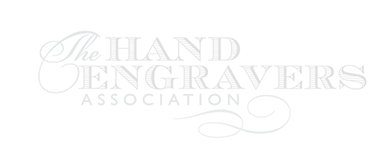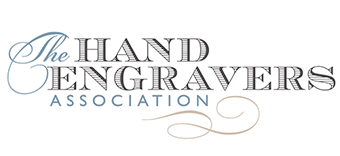engraving for print
The use of relief engraving (on wood) and intaglio (on metal) to produce patterns for print dates back centuries. This typically involves engraving the images or texts on a block of wood or a panel of metal and doing this in reverse. The process of engraving a plate and then taking a print is basically simple but requires substantial experience to do well. Historically, the two skills were often carried out by separate specialists: an engraver and a printer.
As with all engraving the cut produced by the graver has depth. Printing ink is rubbed or rolled into the cuts, then the metal plate (often copper) is wiped over so that the ink is held only in the cuts. Damp paper is placed over the plate and a layer of felt over that. It is then rolled through a printing machine under pressure. The paper is pressed into the ink held in the engraved line, so transferring it to the paper. Precisely what had been engraved now exists in reverse on the paper as a print.
The ‘trick’ to cutting in reverse for printing lies in the marking out before the actual cutting happens. Often engravers would keep a mirror in their tool kit to check lettering in reverse for balance and spacing. This was an easy way to see the marked out reverse image the right way round.
Multiple copies can be taken from a printing plate. For many centuries its use was widespread for producing musical scores, illustrations, bank notes, visiting or calling cards, book plates, maps and so on. If large numbers of prints were required from a copper plate in later years the copper would be steel plated to harden it and so enable a protracted print run.
Artists such as Durer, Hogarth and William Blake were great practitioners of the skill. The quality of line produced is particular and very beautiful. Colour could be hand painted on after the ink was dry.
There are two methods of embossing. The first is like printing, but without the ink. Here the paper is pushed into the cuts as it is rolled through the press. The effect is to raise letters or decoration so that it stands in relief on the surface of the paper, creating a subtle effect using highlight and shadow. This technique was used on letterheads, often in the form of coats of arms or family crests.
The second method is to create matching male and female dies, between which paper is pressed or squeezed in order to create the required pattern or design. This process was especially suitable for coats of arms used on notepaper. The unique nature of each design allocated to a particular family would immediately authenticate the origin of the paper and therefore the letter or message it contained. This method of embossing has also been used to great effect on metal by crafts people like Malcolm Appleby and Karen Wallace.

